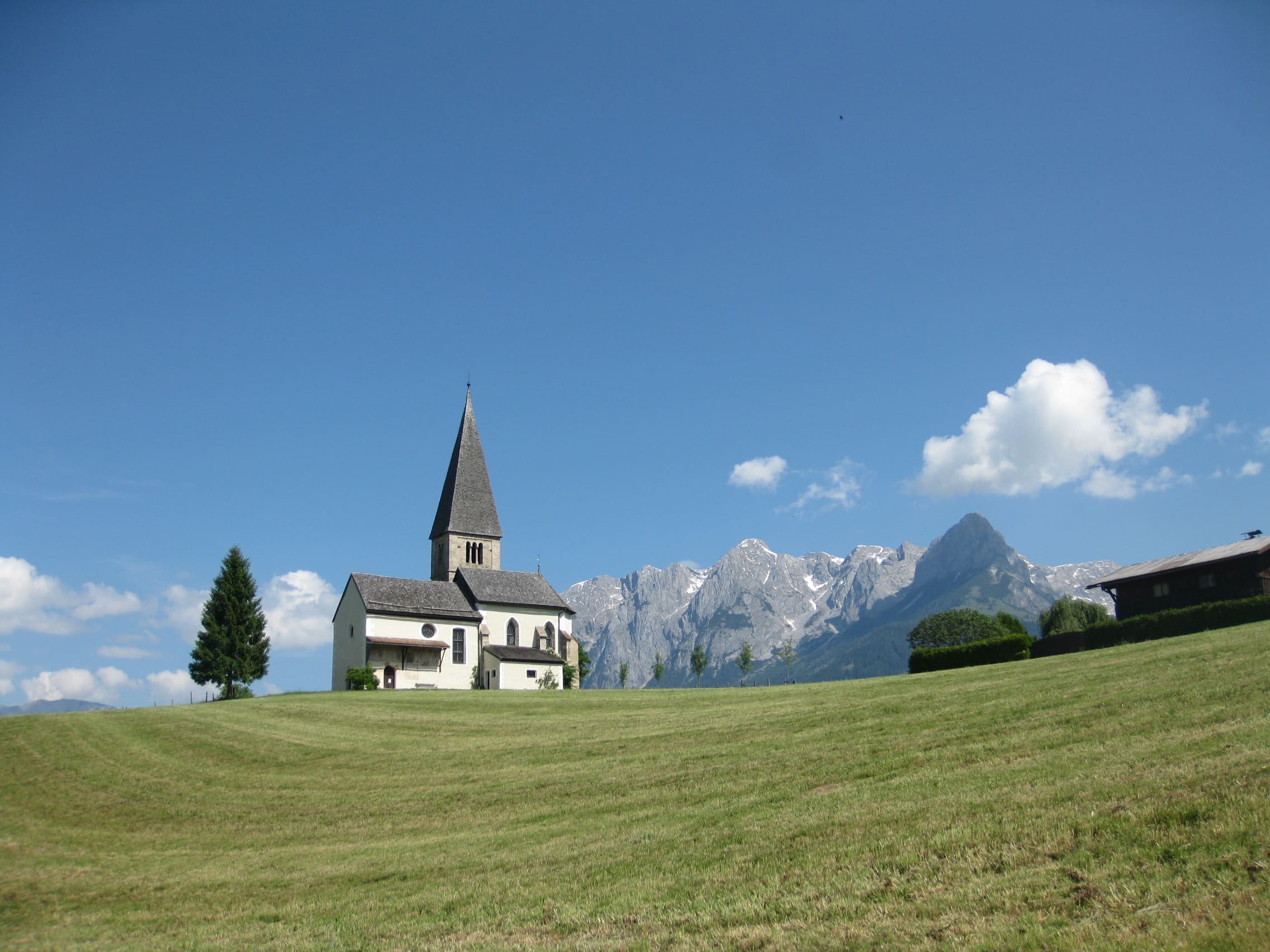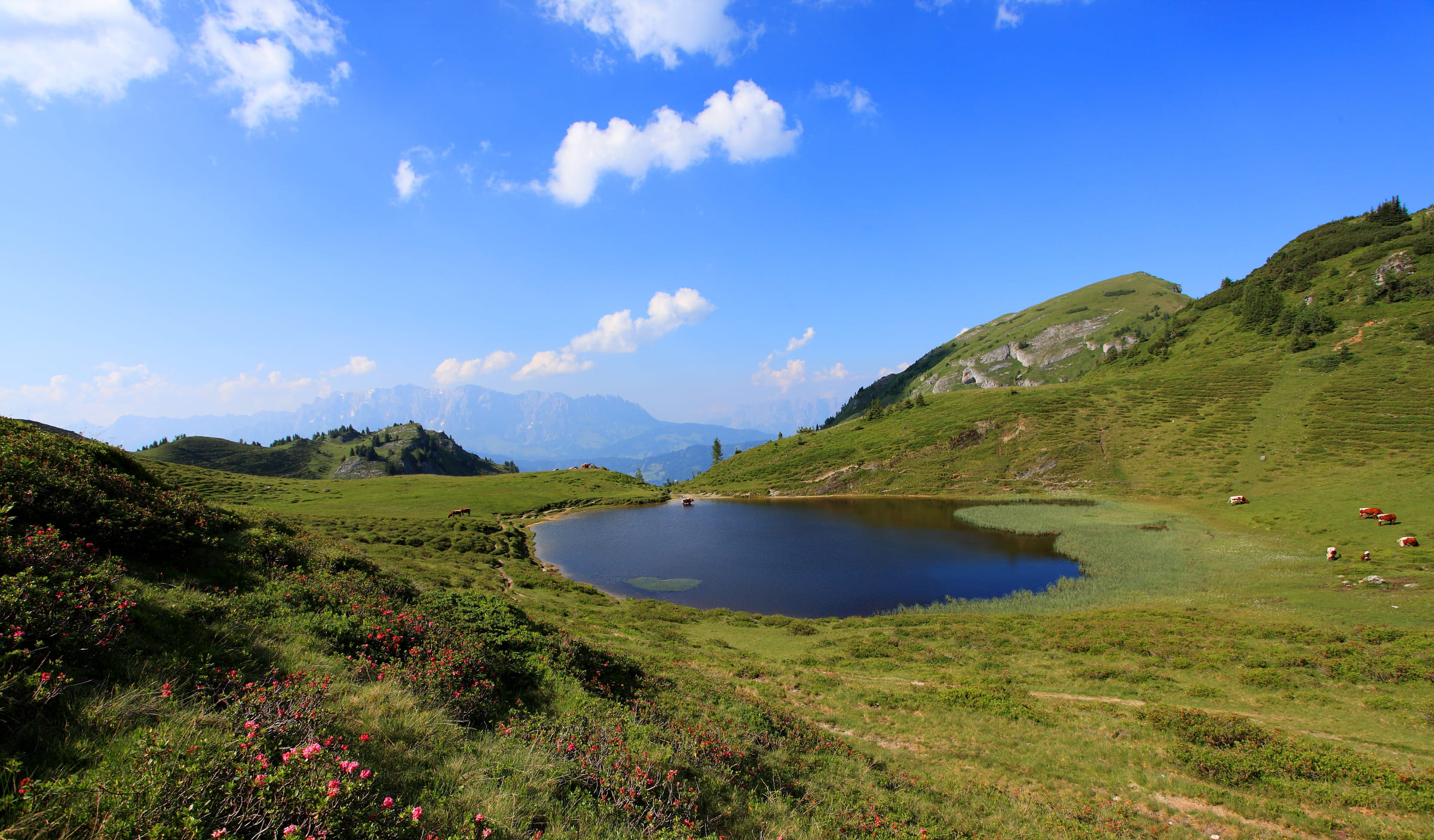Segmann - Heritage of the Ice Age
At the height of the Würm ice age period, 24-22,000 years ago, the Hochgrüneck (1,827 m) was completely covered by the Salzach glacier. The collapse of the glaciers began around 20,000 years ago - the end of the ice age was 11,600 years ago.
The heritage of the ice age Salzach glacier in the Ore of the Alps UNESCO Global Geopark is diverse. After the ice was melted, the entire glaciated area was covered by a more or less thick lodgment of till cover.
These deposits can still be found today in the valley of the Gainfeldbach, in the Buchberg area or on the terrace of St. Veit. Terminal moraines, which formed the onetime edge of the glacier, have hardly been preserved due to the steepness of the terrain. Ice edge sediments, from the time when the glaciers melted, can be found between Hüttau and Bischofshofen on the Fritzerberg, and on the Buchberg, as well as south of Mühlbach on the Hochkönig massif. A classic roche moutonnée (Rundhöcker) that has been smoothed over by the glacier can be found near Lehen in the community of Bischofshofen. A special ice age jewel includes the the cirque lakes in the nature reserve area of Heukareck, Paarseen and Schuhflicker in the municipality of St. Veit / Schwarzach.
Kids
What is an ice age?
Imagine that a large part of the Earth was covered by glaciers, even places that are normally warm and sunny. Imagine how cold it must have been on earth!
That's how it is in an ice age!
Scientists describe an ice age as a long period of time (millions of years) in which the temperatures on earth are colder than usual and the glaciers are larger than usual. Although today's glaciers are smaller than in the past, scientists see them as a sign that we are indeed still in an ice age. And we have been for 2.5 million years!
An ice age is divided into warm periods, during which the glaciers melt, and cold periods, during which the glaciers grow. This colder period is known as the ice age.
The last ice age took place between 115,000 and 11,700 years ago! During the coldest period, around 20,000 years ago, large areas of ice reached North America and Europe, including our region! The Salzach Valley was so thickly covered with ice that only the peak of the Hochkönig was above it.
We are currently in the warmer phase of an ice age. No one knows exactly when the next ice age will begin, but scientists believe it will be tens of thousands of years before it starts!
What is an ice age?
Did you know? The Earth's climate was not always the way it is today. There were even periods when it was so cold that the glaciers extended beyond the polar regions!
Scientists define an ice age as a long period of time (millions to tens of millions of years!) during which the Earth's surface and atmosphere are relatively cool, allowing glaciers to grow and cover large areas. Within an ice age, periods of warm temperatures alternate, during which the glaciers retreat (interglacial period), and periods of colder temperatures, during which the glaciers advance (glacial period).
Based on records in the polar ice caps, marine sediments and tree rings, to name but a few, scientists estimate that there has been not just one, but at least five ice ages in the last 4.6 billion years!
As there are still glaciers at the poles (e.g. on the Greenland ice sheet) and in the high mountains, we are technically in an ice age, and have been for 2.5 million years! Scientists refer to the current ice age as the Quaternary. To be precise, we are in an interglacial period that began 11,700 years ago!
The last ice age, which many informally refer to as the "last ice age", took place between 115,000 and 11,700 years ago and was at its coldest around 20,000 years ago. During this peak, the average temperature on Earth was probably 5°C colder than it is today! The ice sheets covered 30 % of the Earth's total land area and reached North America (all of Canada) and parts of Europe, including the Alps! The Salzach Valley was buried under such a thick layer of ice that only the summit of the Hochkönig was exposed.
No one knows exactly when the next ice age will begin, and given the phenomenon of global warming, the future is even more uncertain. Scientists believe that the current interglacial period will last for tens of thousands of years!
What is an ice age?
What do you think of when you hear the word "ice age"? A world that is completely covered in ice? You're not far off the mark, but an ice age is much more complex than that!
Scientists define an ice age as a long period of time (millions to tens of millions of years!) during which the Earth's surface and atmosphere are relatively cool, allowing glaciers to expand and cover large areas. An ice age consists of interglacial and glacial cycles: fluctuating warm periods in which the glaciers retreat and cold periods in which they advance.
Polar ice caps, marine sediments and tree rings contain physical, chemical and/or biological indicators that allow conclusions to be drawn about the Earth's past climate. Based on this evidence, scientists estimate that there has been not just one, but at least five ice ages in the last 4.6 billion years!
As there are still glaciers at the poles (e.g. Greenland ice sheet) and at very high altitudes (e.g. Alpine glaciers), we are technically in an ice age, and have been for 2.5 million years! Scientists refer to the current ice age as the Quaternary. To be precise, we are in an interglacial period, the Holocene, which began 11,700 years ago!
The last ice age took place between 115,000 and 11,700 years ago and reached its peak around 20,000 years ago. This peak, known as the "last glacial maximum", was characterised by a global average temperature that was 5°C cooler than today. The ice sheets covered 30 % of the Earth's total land area and reached North America (Canada and the northern parts of the USA) and parts of Europe, including the Alps! The Salzach Valley was buried under such a thick layer of ice that only the summit of the Hochkönig protruded from the ice.
Why do ice ages and interglacial periods alternate? This question is difficult to answer for the older ice ages, but at least for the Quaternary there are many possible explanations, such as shifts in ocean currents or changes in the Earth's reflectivity. However, fluctuations in the Earth's planetary properties, such as its tilt and orbit, play the largest part in the fluctuating cycles of the Quaternary. These are known as Milankovitch cycles.
What will happen to the earth? Will we soon experience an ice age? Despite our records, no one can predict exactly when the next ice age will begin, and with the current global warming, the future is even more uncertain!


